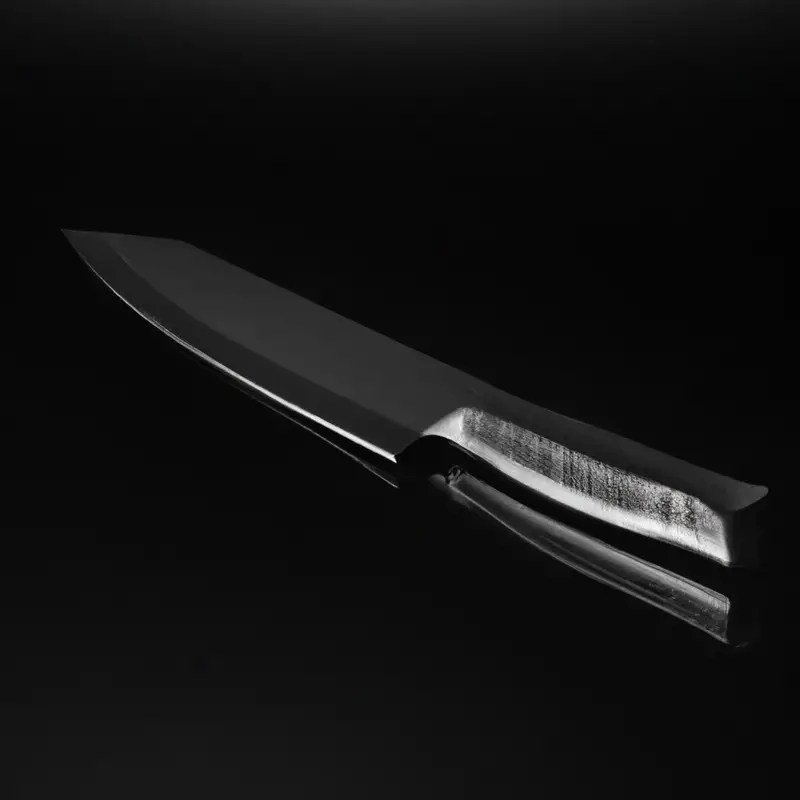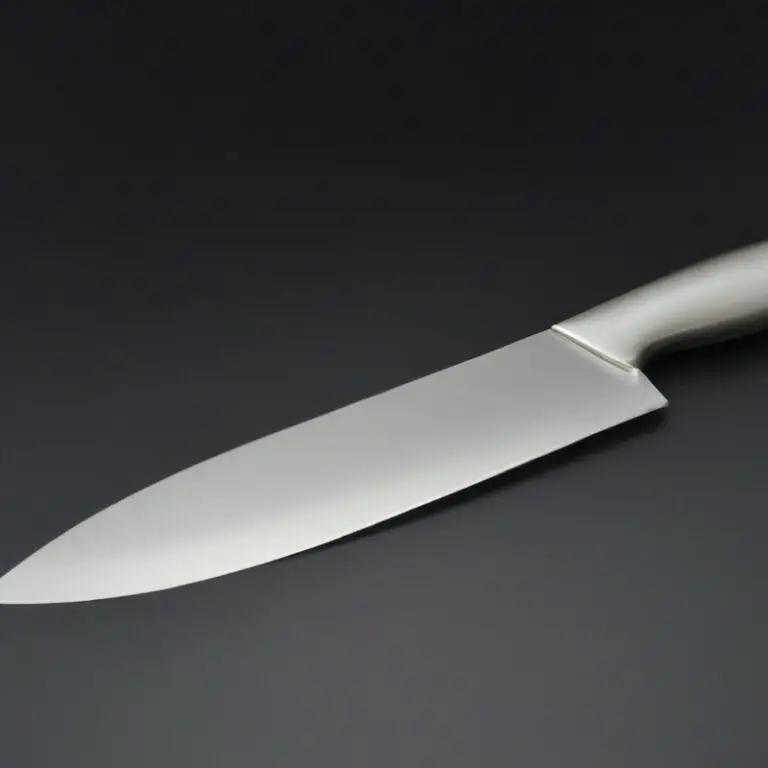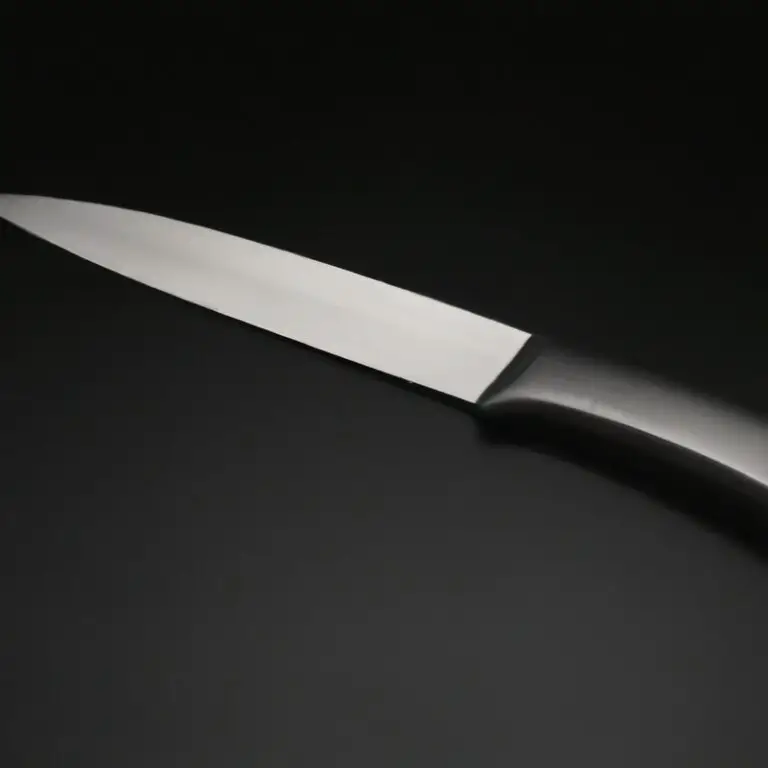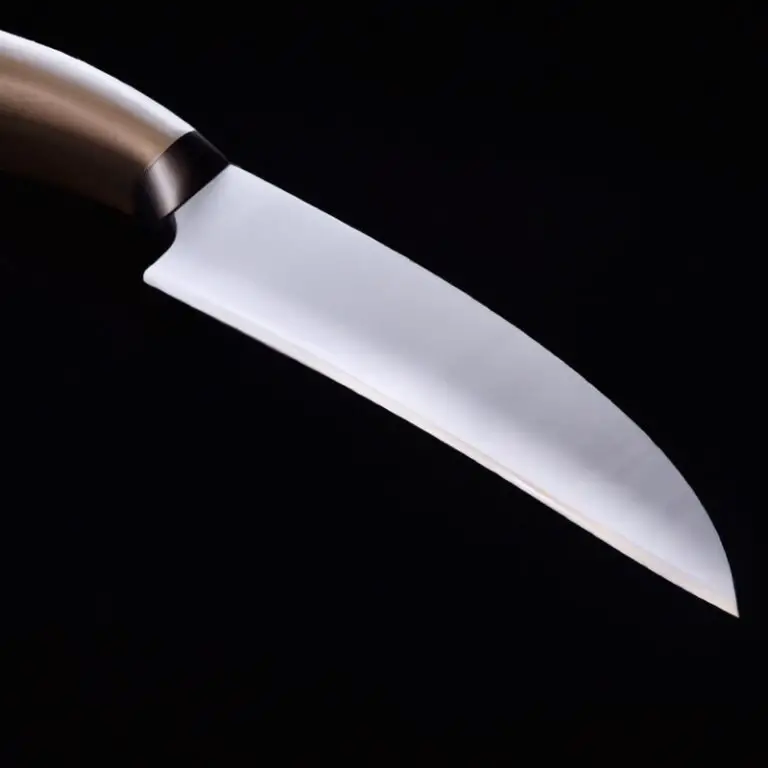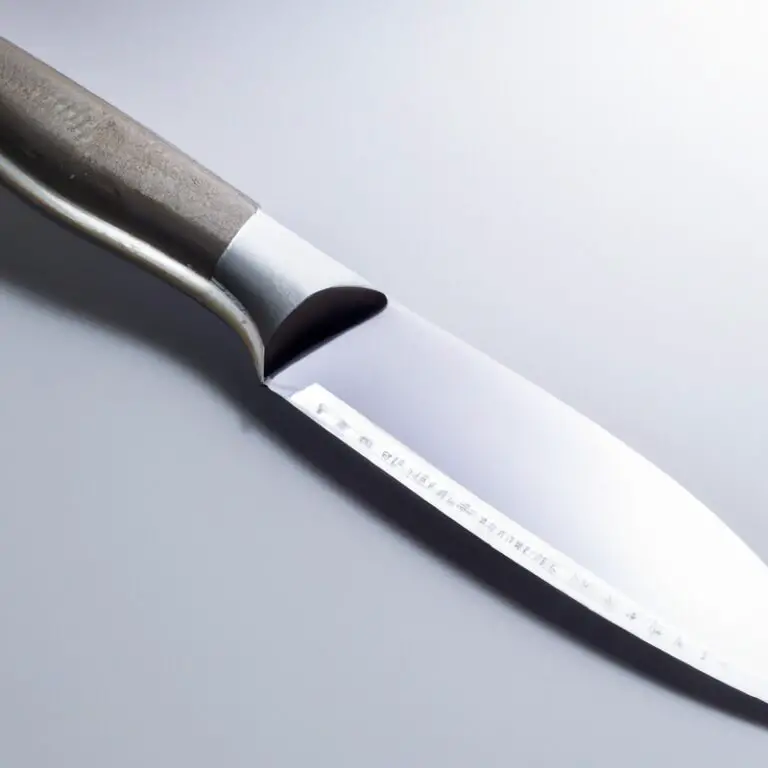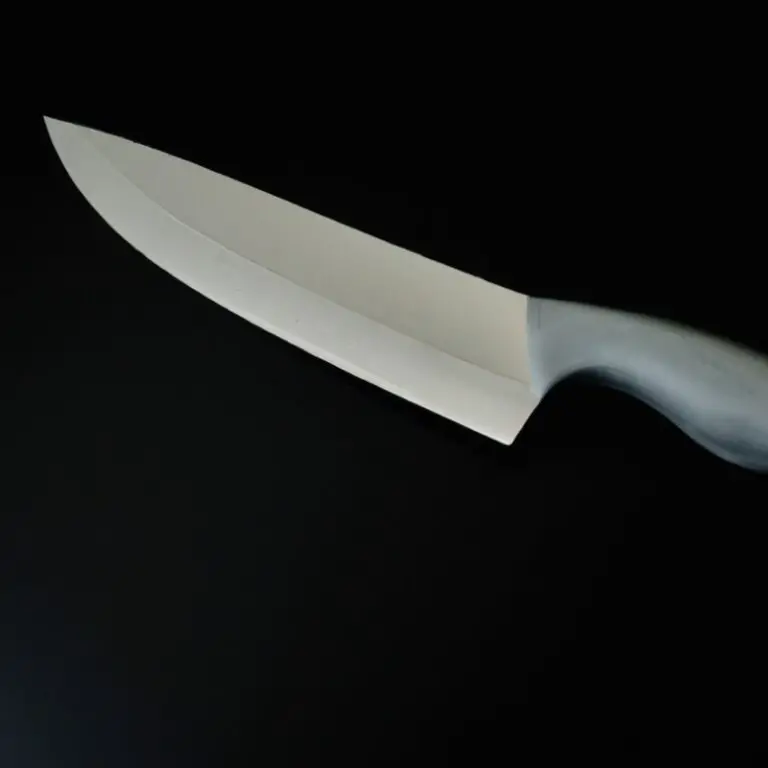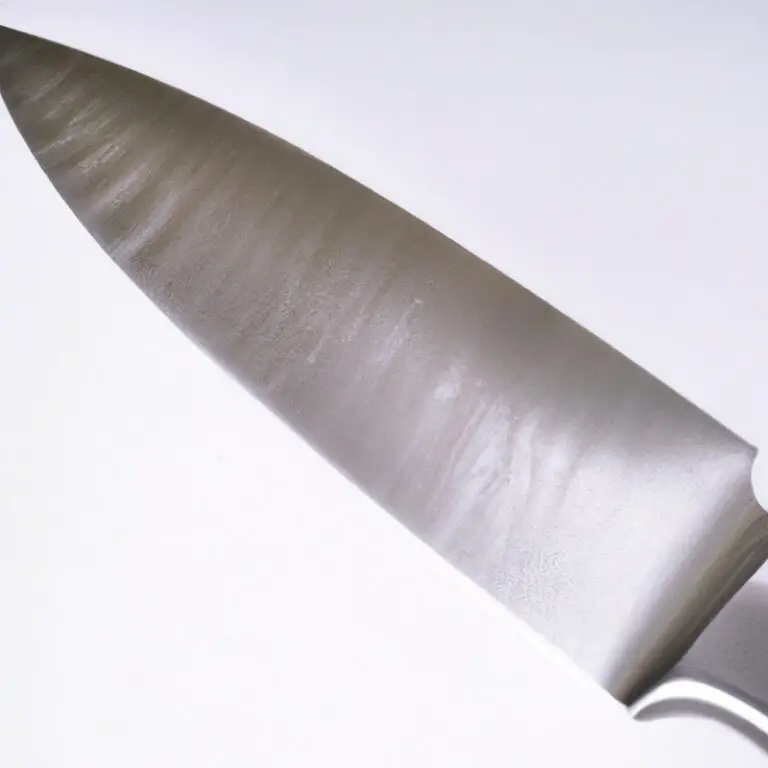Selecting a Cutting Board For Compatibility With Santoku Knives – Tips
Key Takeaways:
- The cutting board material must be softer than the blade of the Santoku knife to prevent damage.
- Bamboo, wood, and plastic are the most appropriate cutting board materials for Santoku knives.
- A thicker cutting board provides better stability and reduces slipping during cutting.
- Regular maintenance and sanitation of the cutting board are crucial to prevent cross-contamination and ensure longevity.
Have you ever used a Santoku knife and struggled with finding the right cutting board to complement its unique design? Selecting the right cutting board for your Santoku knife isn’t just a matter of aesthetics, it’s also a matter of functionality.
As someone who has been in the culinary world for years, I know the difference a good cutting board can make.
In this article, we’ll explore the factors that matter when selecting a cutting board for your Santoku knife, including the pros and cons of different materials and sizes. Let’s dive in!
| Cutting Board Material | Compatibility with Santoku Knives |
|---|---|
| Bamboo | Good |
| Wood | Good |
| Plastic | Fair |
| Glass | Poor |
Understanding the Santoku Knife: A Brief Overview
The Santoku knife is a popular, Japanese-style kitchen knife known for its versatility and precision. It typically has a shorter and wider blade than a traditional chef’s knife, with a flat edge and a slightly curved spine.
The name Santoku translates to “three virtues” in Japanese, referring to its versatility in slicing, dicing, and chopping.
Santoku knives are designed to make quick work of slicing vegetables, meats, and fish. They are also suitable for delicate tasks like mincing herbs or slicing through soft bread without crushing it.
When choosing a cutting board for your Santoku knife, it’s essential to consider its blade material, size, and maintenance requirements.
Avoid using cutting boards made of hard materials like glass, ceramic, or stone, which can dull the knife’s edge quickly. Instead, opt for a cutting board made of softwood or hardwood, like maple, cherry, or walnut.
End-grain boards are ideal for Santoku knives, as they provide a durable surface that won’t dull the blade over time.
Regular maintenance of both your Santoku knife and cutting board is crucial to ensure their longevity. Clean your Santoku knife immediately after use and regularly oil your cutting board to prevent drying and cracking.
By understanding the unique features of your Santoku knife and selecting a compatible cutting board, you can enjoy precise and efficient cutting for years to come.
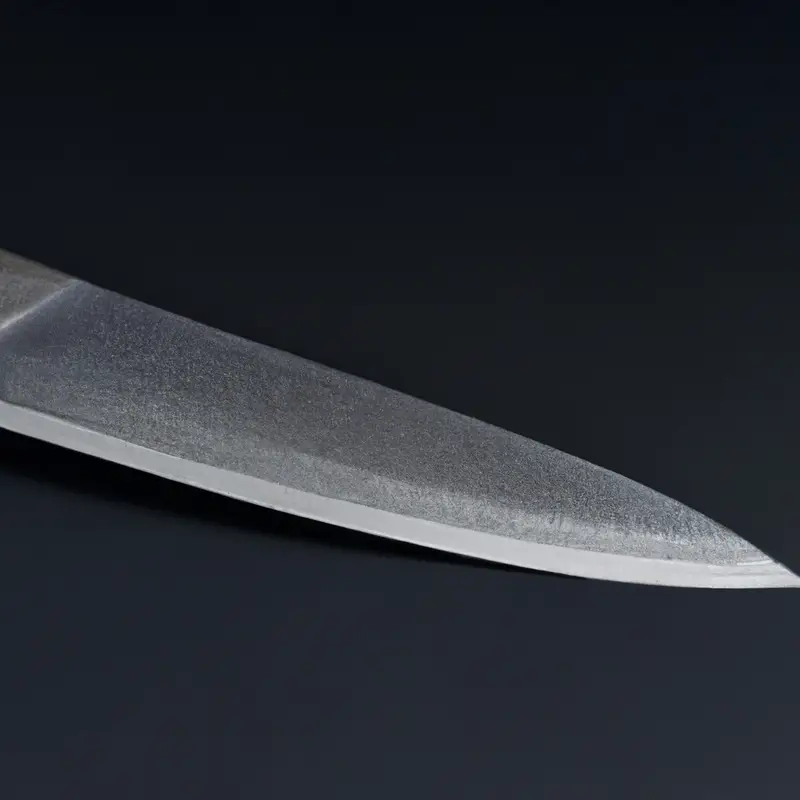
Why Choosing the Right Cutting Board Matters?
Choosing the right cutting board matters because it affects the lifespan of your Santoku knife and food hygiene. The wrong type of cutting board can cause damage to the blade, which can lead to ineffective cutting and costly repairs.
Additionally, cutting boards that harbor bacteria can contaminate food and cause foodborne illnesses.
Choosing the right cutting board for Santoku knives ensures that you have an effective tool for cutting food while maintaining the highest standards of food hygiene.
Factors to Consider When Selecting a Cutting Board for Santoku Knives
Selecting the right cutting board for your Santoku knife is crucial for a clean and safe cutting experience. Here are some factors to consider before purchasing a cutting board:
- Material: Wooden cutting boards are preferred for Santoku knives over synthetic boards. The wood is gentler on the blade and helps prolong its life.
- Size: Your cutting board should be large enough to accommodate the Santoku knife. Select a size that allows for comfortable and easy use without causing the knife blade to touch the surface below.
- Grain Type: End-grain cutting boards are considered better for Santoku knives as they are less prone to dull the blade. However, edge-grain boards are a good alternative and easier to maintain.
- Maintenance: Opt for a cutting board that is easy to clean, maintain, and repair to prevent the accumulation of bacteria that can cause cross-contamination.
By taking these factors into account, you can choose the best cutting board for your Santoku knife and ensure that it performs well for years to come.
Wooden Boards vs. Synthetic Boards: Pros and Cons
Wooden boards and synthetic boards are the two primary types of cutting boards available in the market. While wooden boards are durable, attractive, and natural, synthetic or plastic boards are lightweight, easy to clean, and affordable.
The choice between the two often comes down to personal preference and intended use.
Pros of wooden boards:
- Natural and attractive appearance
- Durable and long-lasting
- Wooden boards are gentler on the knife’s edge than synthetic boards
- A properly maintained wooden board can last for years
Cons of wooden boards:
- They are porous and can absorb liquids and juices, leading to bacterial growth
- Wooden boards require regular maintenance, such as oiling and drying.
- They are more expensive than synthetic boards.
Pros of synthetic boards:
- Lightweight and easy to handle
- They are non-porous and do not absorb liquids, minimizing the risk of bacterial growth
- Synthetic boards are dishwasher-safe
- They are more affordable than wooden boards
Cons of synthetic boards:
- They are prone to knife marks, which can harbor bacteria
- Plastic boards are less durable than wooden boards and need frequent replacing
- They are not eco-friendly and can harm the environment.
Overall, both wooden and synthetic boards have their advantages and disadvantages, and the choice ultimately depends on your preference, budget, and intended use. If you prefer a natural and durable board and don’t mind the extra maintenance, a wooden board is an excellent option.
However, if you want a lightweight and budget-friendly board, synthetic boards are the way to go.
Material Matters: Which Type of Wood is Best for Santoku Knives?
When it comes to selecting the best type of wood for Santoku knives, hardwoods with a tight grain pattern are recommended for their durability and ability to withstand wear and tear. Examples of suitable woods for cutting boards include hard maple, beech, walnut, and cherry.
It is important to avoid softer, porous woods such as pine or fir, as they can quickly become damaged and develop grooves or splinters that can dull or damage the sharp blade of your Santoku knife.
Additionally, avoid using bamboo cutting boards as they have a high density and can cause excessive wear on the knife’s edge. Remember to always maintain your cutting board with proper care and maintenance to extend its longevity and effectiveness with your Santoku knife.
The Size Dilemma: What Size Cutting Board is Ideal for Your Santoku Knife?
The size of the cutting board matters when using a Santoku knife. Ideally, it should be at least as long as the length of the blade, which ranges from 5 to 7 inches.
A board that is too small hinders your ability to cut efficiently and safely.
With a larger surface area, it is easier to avoid dislodging food pieces from the cutting board while slicing and dicing. Also, a bigger cutting board allows for more space to turn your ingredients while preparing meals.
Therefore, be sure to select a cutting board that accommodates the length and width of your Santoku knife for optimal results.
End-Grain vs. Edge-Grain Cutting Boards: Which One is Right for Your Santoku Knife?
End-grain and edge-grain cutting boards are two popular choices when selecting a cutting board. For Santoku knives, an end-grain cutting board is the better option.
End-grain refers to the orientation of the wood fibers.
The fibers are perpendicular to the surface of the board, with the exposed ends forming the cutting surface. This design allows the knife to slice through the fibers, preserving the blade’s sharpness.
On the other hand, edge-grain cutting boards have the wood fibers oriented vertically.
This causes the blade to cut through the fibers, leading to damage, dulling the blade and causing increased wear and tear. In addition to preserving the blade, end-grain cutting boards are also more durable and resist warping and cracking.
They are also easier on knife edges, so you don’t have to sharpen your Santoku knives as frequently.
While end-grain cutting boards are the best choice for Santoku knives, they tend to be more expensive. However, investing in a high-quality end-grain cutting board will help keep your Santoku knives in excellent condition and will save you money in the long run.
Maintenance Matters: How to Clean and Care for Your Santoku Knife and Cutting Board
Caring for your santoku knife and cutting board is essential to ensure that they remain in good condition and perform at their best. Here are some tips to help you keep them in top shape:
- Clean your santoku knife and cutting board after each use. Use warm soapy water, a soft sponge or cloth to wipe down the blade and board, and ensure all food particles are removed.
- Do not soak your knife or cutting board in water as this can cause damage to the blade or warp the board. Always dry them immediately after cleaning.
- Use a honing steel to sharpen your knife regularly. A dull knife can be dangerous as it can slip while in use and cause injury.
- Oil your cutting board regularly if it is made from wood to keep it from drying out and cracking. Mineral oil is a good option as it is food safe, readily available, and inexpensive.
- Use separate cutting boards for meats, fruits, and vegetables to prevent cross-contamination.
By following these simple maintenance tips, you can extend the lifespan of your santoku knife and cutting board and ensure that they remain in excellent condition.
Consequences of Using the Wrong Cutting Board for Your Santoku Knife
Using the wrong cutting board for your Santoku knife can cause significant damage to both the knife and the cutting board. Using a cutting board that is too hard or made of glass or ceramic can rapidly dull the blade, requiring frequent sharpening or even causing the knife to become unusable.
Additionally, using a cutting board made of a porous material, like bamboo or plastic, can harbor bacteria that can contaminate your food and potentially cause illness.
This is why it’s crucial to select a cutting board that is compatible with your Santoku knife and to maintain it properly to ensure both longevity and food safety.
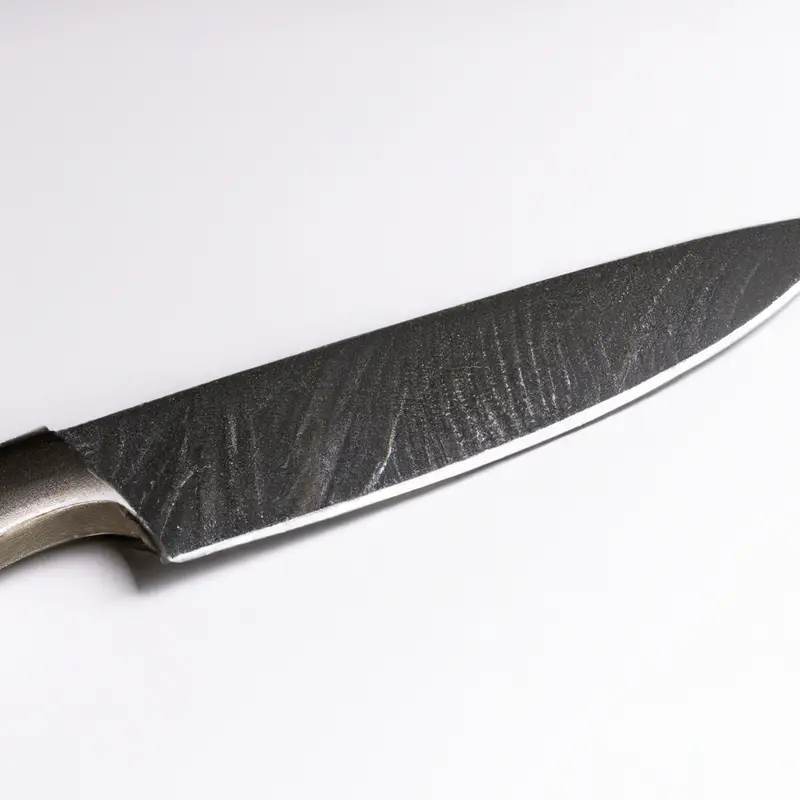
Final Verdict
Choosing the right cutting board for your Santoku knife is crucial for maintaining its sharpness and longevity. Factors such as material, size, and type are essential to consider when making your selection.
While wooden boards have their advantages, synthetic boards can be a durable and convenient option.
It’s important to remember that the wrong cutting board can damage your Santoku knife and compromise the quality of your food. By investing in a compatible cutting board and following the proper maintenance tips, you can ensure that your cooking experience remains efficient, healthy, and enjoyable.
Remember, taking care of your tools means taking care of your passion.

